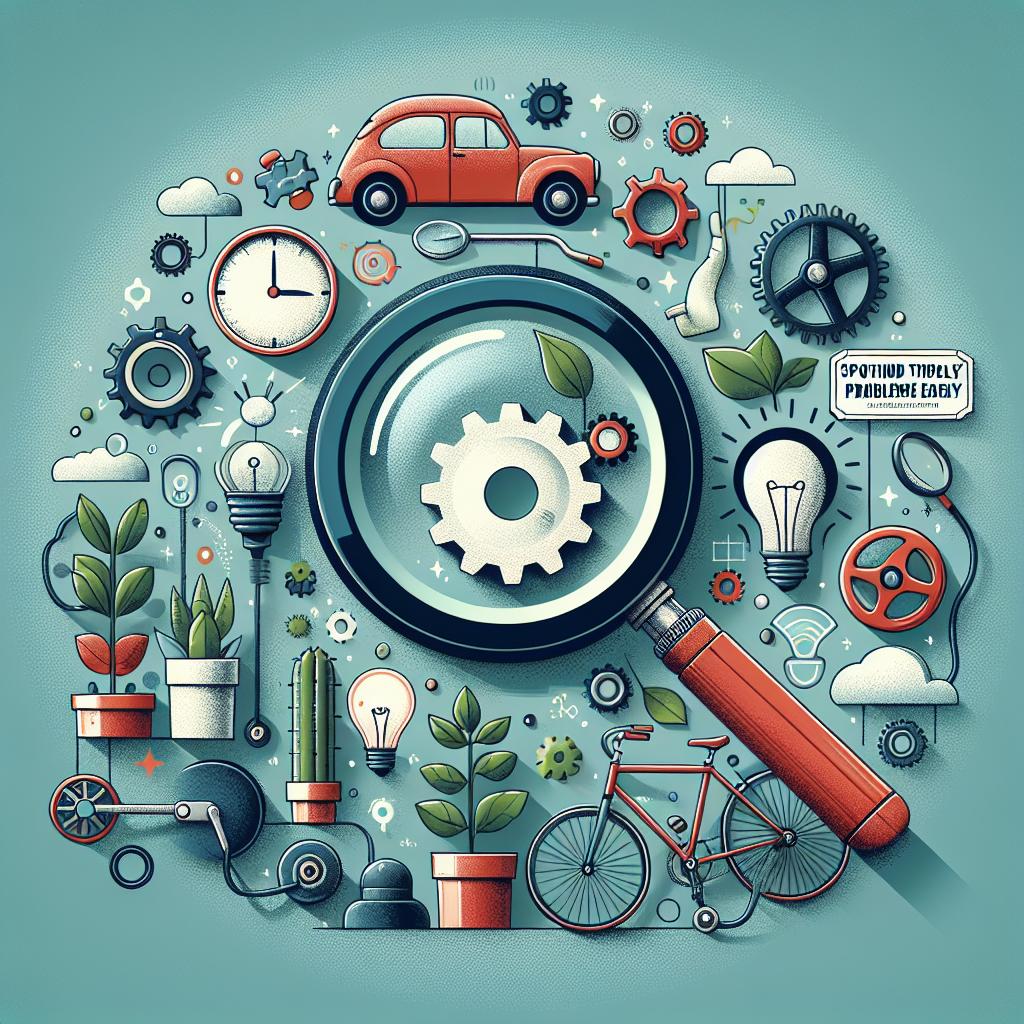This post may contain affiliate links which means I may receive a commission for purchases made through links. Learn more on my Private Policy page.
The Importance of Regular Inspections for Your Irrigation System
When the sun shines brightly and the plants in your garden stretch eagerly towards the sky, it’s a wonderful reminder of the beauty that a well-tended landscape can bring. However, the secret to keeping your green oasis thriving lies beneath the surface, in the intricate web of pipes and sprinklers that make up your irrigation system. Just as a car needs regular tune-ups to run smoothly, your irrigation system requires periodic inspections to ensure its optimal performance. Think of these check-ups as spa days for your garden—where every droplet of water nurtures the soil, promotes growth, and helps your garden flourish. Join us as we dive into the essential reasons why maintaining your irrigation system with regular inspections not only saves you time and money but also ensures your plants stay happy and healthy all season long!
Ensuring Efficiency: How Regular Inspections Boost Your Irrigation System Performance
Regular inspections of your irrigation system are essential for maintaining its efficiency and ensuring optimal performance. By committing to a proactive maintenance schedule, you can identify and rectify issues before they escalate, saving both time and resources. Key benefits include:
- Leak Detection: Spotting leaks early can prevent water wastage and reduce utility bills.
- System Optimization: Adjusting pressure and flow ensures that every part of your garden receives the right amount of water.
- Component Check: Inspecting valves, emitters, and filters prevents unexpected breakdowns.
- Safety Assurance: Regular check-ups help in identifying any potential hazards that could compromise the system.
Additionally, incorporating regular inspections allows for timely upgrades and modifications that can enhance your system’s overall performance. Modern irrigation technology evolves, and what worked well years ago might not be the most efficient solution today. Keeping track of your system’s health can help in making informed decisions regarding:
| Inspection Aspect | Recommended Frequency |
|---|---|
| Visual Inspection | Monthly |
| Filter Cleaning | Bi-Annually |
| System Performance Test | Annually |
| Equipment Replacement | Every 3-5 Years |
By prioritizing these evaluations, you not only enhance the longevity of your system but also contribute to water conservation efforts. This leads to healthier plants, a lush landscape, and a sustainable approach to gardening.

Spotting Problems Early: The Key Benefits of Timely Maintenance Checks
Maintaining an irrigation system without timely checks can lead to unforeseen complications, significantly affecting the efficiency and sustainability of your water management. By conducting regular inspections, you can uncover potential issues before they escalate into major repairs. Some key benefits of these proactive maintenance checks include:
- Early Detection of Leaks: Spotting leaks promptly ensures no water is wasted, saving resources and ultimately, money.
- Optimal Water Distribution: Regular checks help ascertain that all areas of your landscape receive the right amount of water, promoting healthy plant growth.
- Extended Lifespan of Components: Maintaining your system prevents wear and tear, thereby extending the overall lifespan of irrigation components.
Incorporating a structured maintenance schedule not only keeps your irrigation system running smoothly but also enhances the quality of your landscape. For added clarity, here’s a simple overview illustrating the benefits of timely maintenance:
| Benefit | Impact |
|---|---|
| Early Detection of Problems | Reduces repair costs |
| Efficient Water Usage | Conserves resources |
| Improved Plant Health | Heightens aesthetic appeal |
| Enhanced System Longevity | Stretches budget over time |

Watering Wisely: Techniques to Optimize Your Irrigation System During Inspections
To ensure your irrigation system operates efficiently, focus on a few key techniques during your inspections. First, check for leaks—small cracks in hoses or fittings can lead to significant water loss. Make it a habit to inspect every component, including valves and connectors. If you notice any leaks, consider using sealants or replacing parts to maintain system integrity. Additionally, pay attention to the water pressure; it should be consistent both at the source and at the spray heads. Fluctuations can indicate underlying issues that need addressing.
Another essential technique is to adjust your sprinkler heads for optimal coverage. During the inspection, ensure that no grass or plants are obstructing the water flow. Proper alignment guarantees that each area receives adequate moisture without wastage. Also, calibrate the irrigation schedule based on seasonal changes and plant needs. Utilize a data table to track your findings and adjustments:
| Inspection Item | Frequency | Notes |
|---|---|---|
| Check for Leaks | Monthly | Inspect hoses, fittings, and valves |
| Monitor Water Pressure | Bi-Monthly | Ensure consistency across zones |
| Adjust Sprinkler Heads | Seasonally | Ensure no obstructions are present |
| Calibrate Schedule | Every 3 Months | Modify based on weather and plant needs |

Turning Insight into Action: Simple Steps for a Thorough Irrigation System Review
Regular inspections of your irrigation system are crucial to ensuring optimal performance and conserving resources. Start by conducting a visual assessment of your entire system. Look for signs of wear and tear on pipes, connections, and emitters. You might find:
- Leaky hoses or connections: Small leaks can waste significant water over time.
- Clogged emitters: Blockages restrict water flow and can create dry spots in your garden.
- Misaligned sprinkler heads: Check if any heads are spraying water outside the intended area.
After identifying any issues, it’s time to make the necessary repairs or adjustments. Use the following table to prioritize your action items:
| Problem | Action |
|---|---|
| Leaking connections | Replace gaskets or tighten fittings |
| Clogged emitters | Flush or replace emitters |
| Misaligned sprinklers | Adjust the direction or replace heads |
Incorporating seasonal reviews into your routine will help you stay ahead of potential problems, saving you time and money in the long run. Don’t forget to document your findings and any actions taken during inspections to track system performance over time!
The Conclusion
As we turn off the taps on our exploration of irrigation systems, let’s take a moment to appreciate the unsung hero of our green spaces: regular inspections. Think of these check-ups as a spa day for your irrigation system, where leaks are repaired, clogs are cleared, and controllers are fine-tuned, all in the name of nurturing healthy, vibrant landscapes. Just like we prioritize our health with routine check-ups, our irrigation systems deserve the same TLC to ensure they function at their best. So, whether you’re tending to a sprawling garden or a modest backyard, remember that a little time invested today can yield lush rewards tomorrow. Keep your system happy, your plants flourishing, and your water bills in check—because a well-cared-for irrigation system is truly a gift that keeps on giving! Happy watering, and may your gardens thrive! 🌿💧
This post may contain affiliate links which means I may receive a commission for purchases made through links. Learn more on my Private Policy page.

